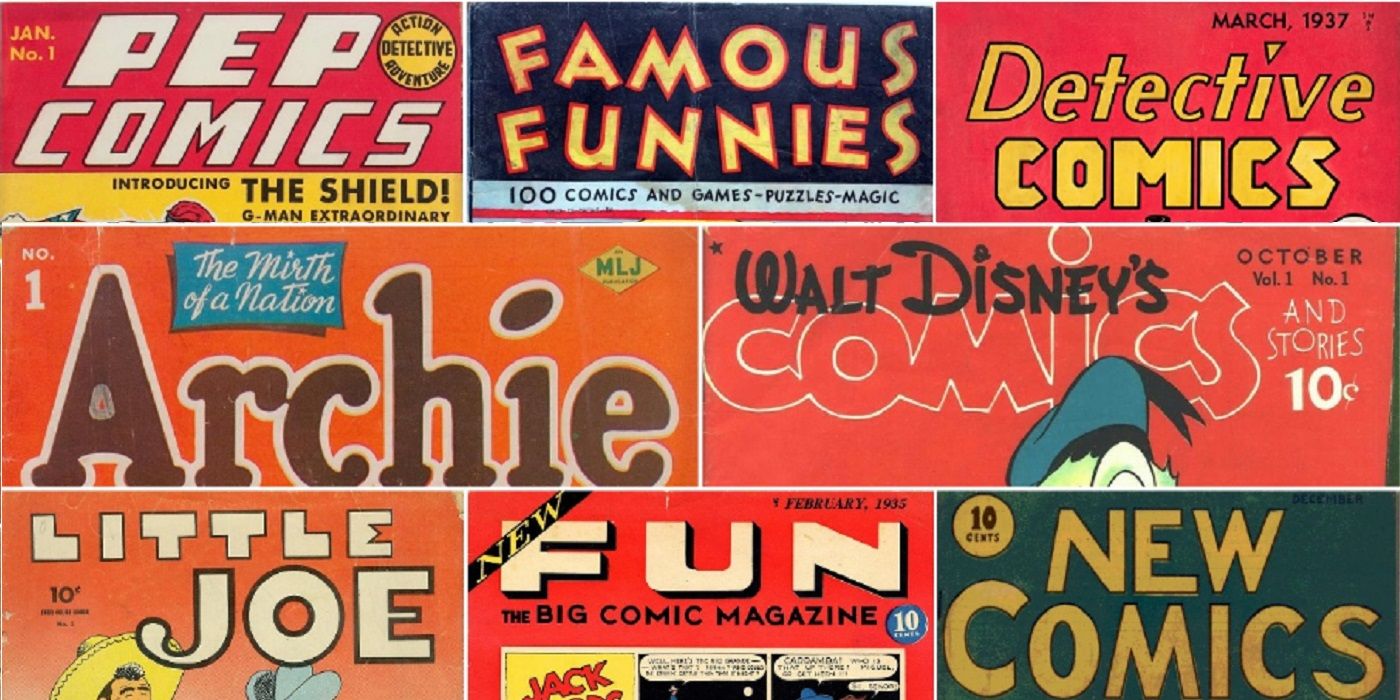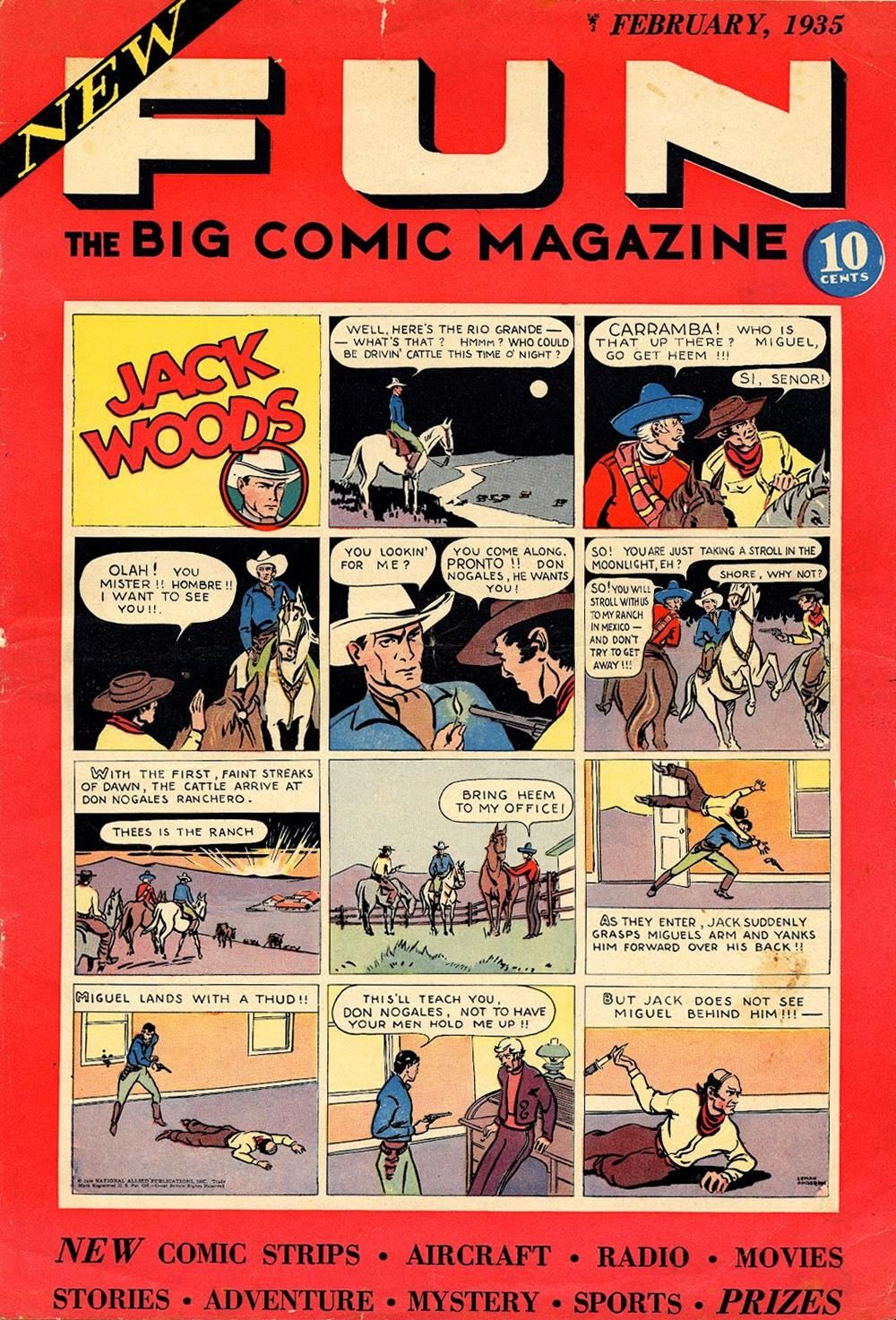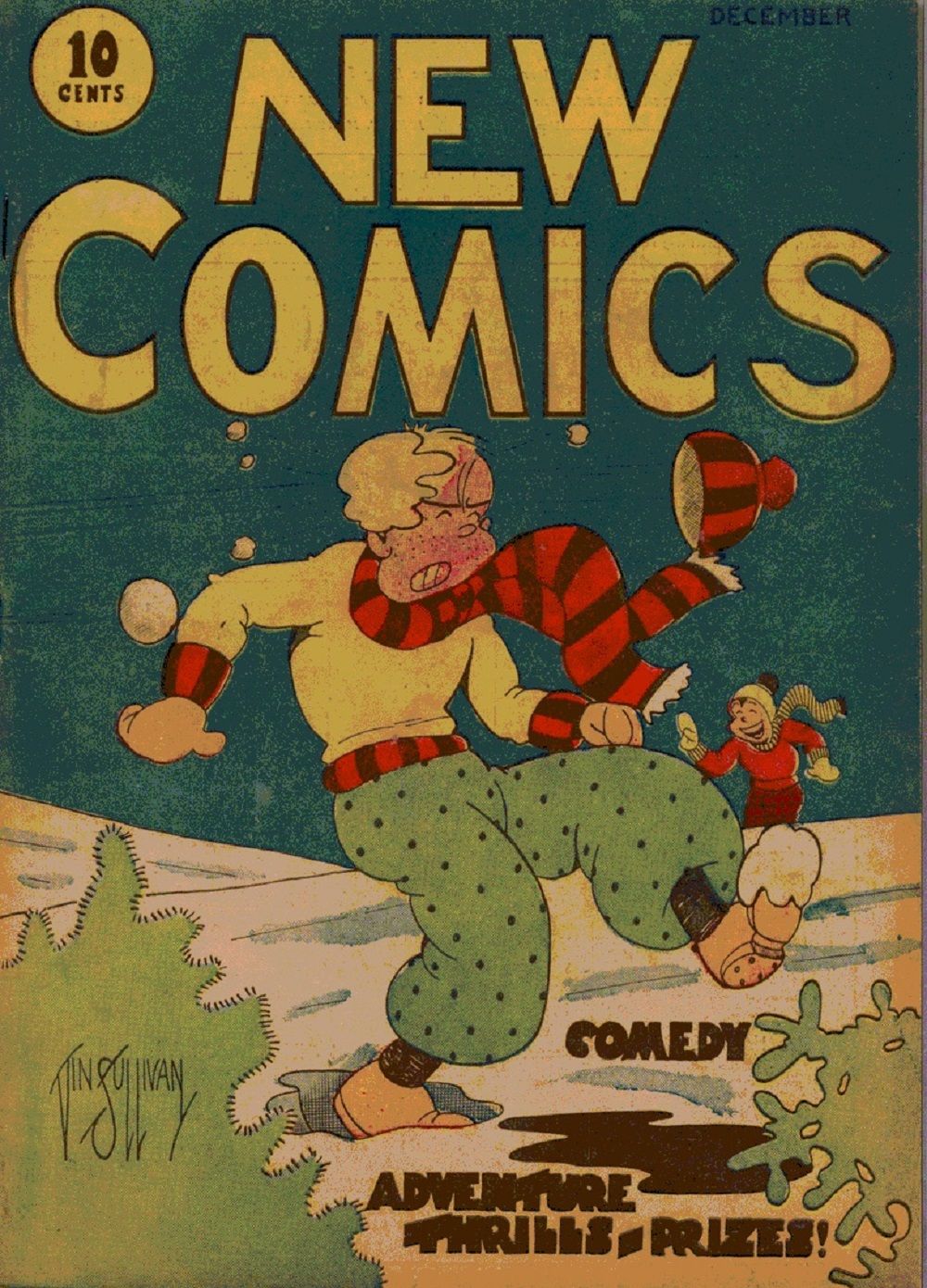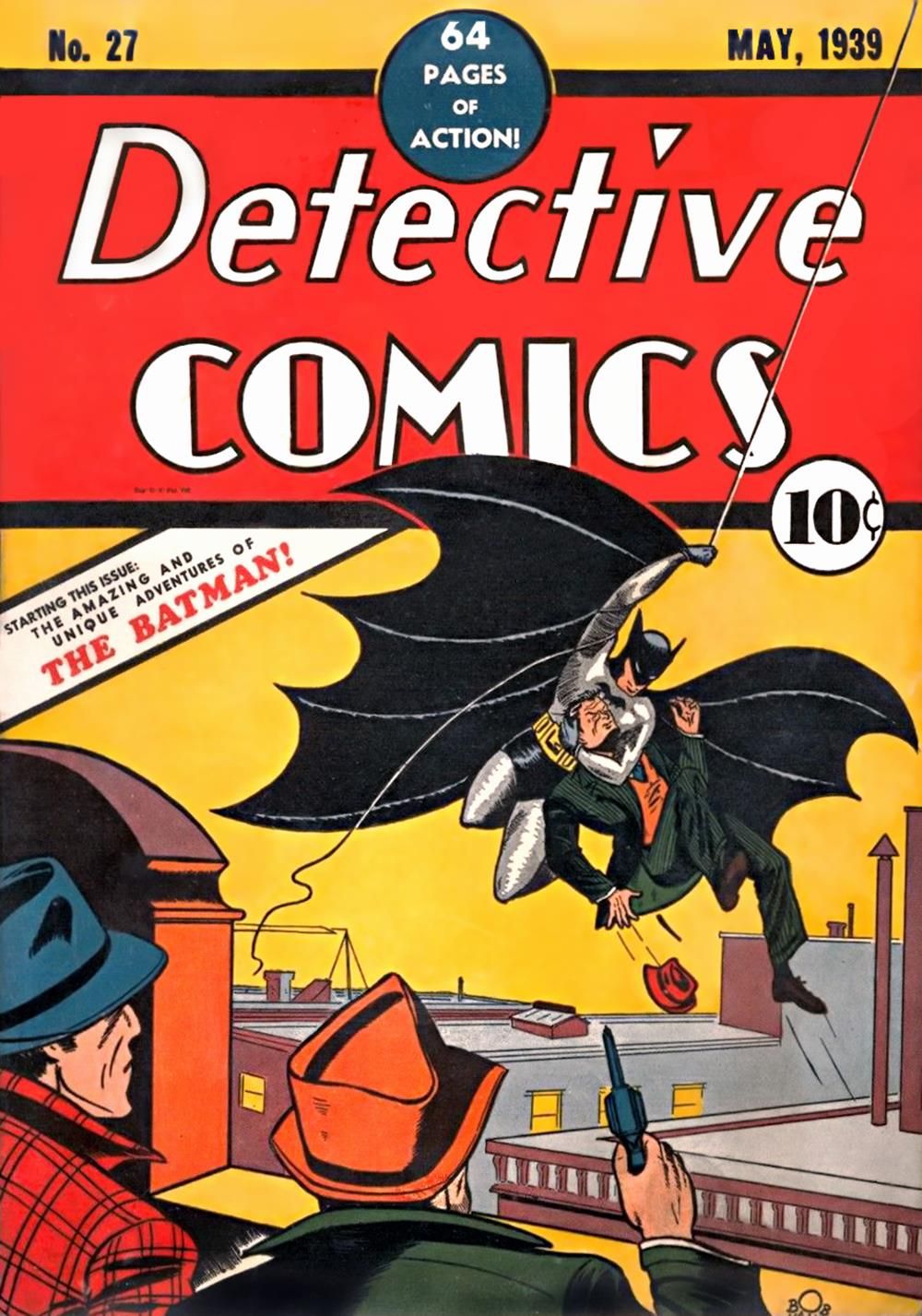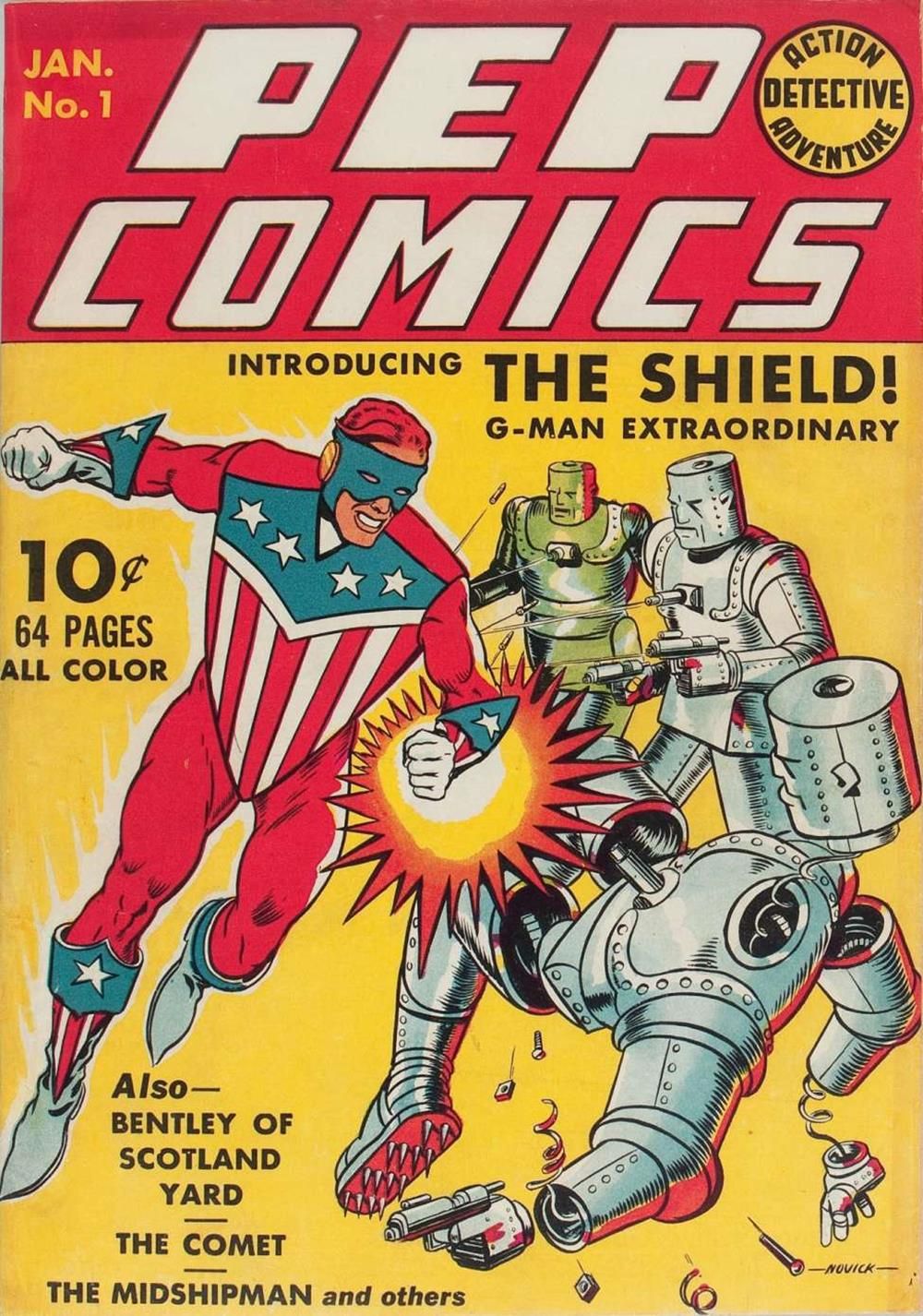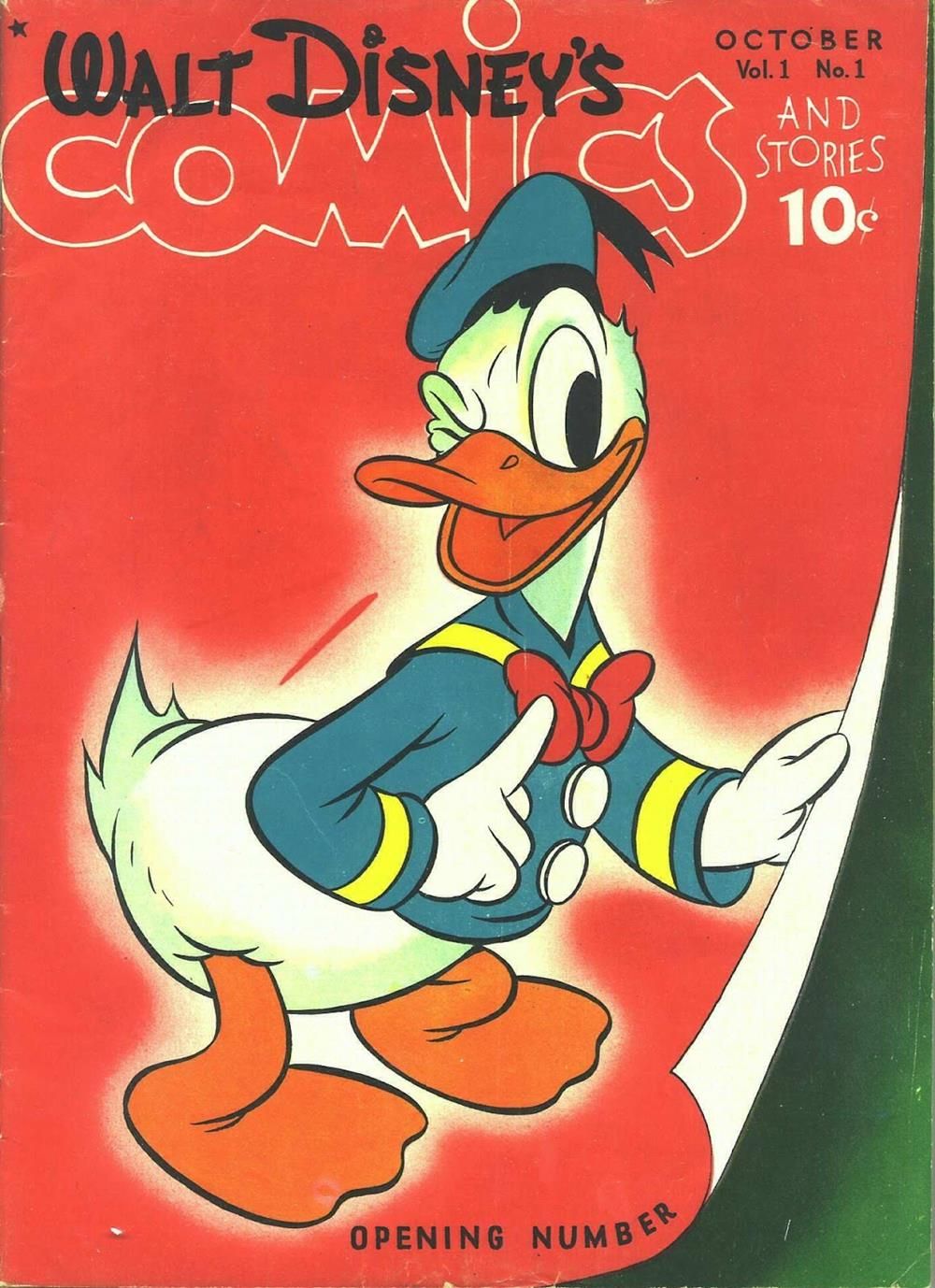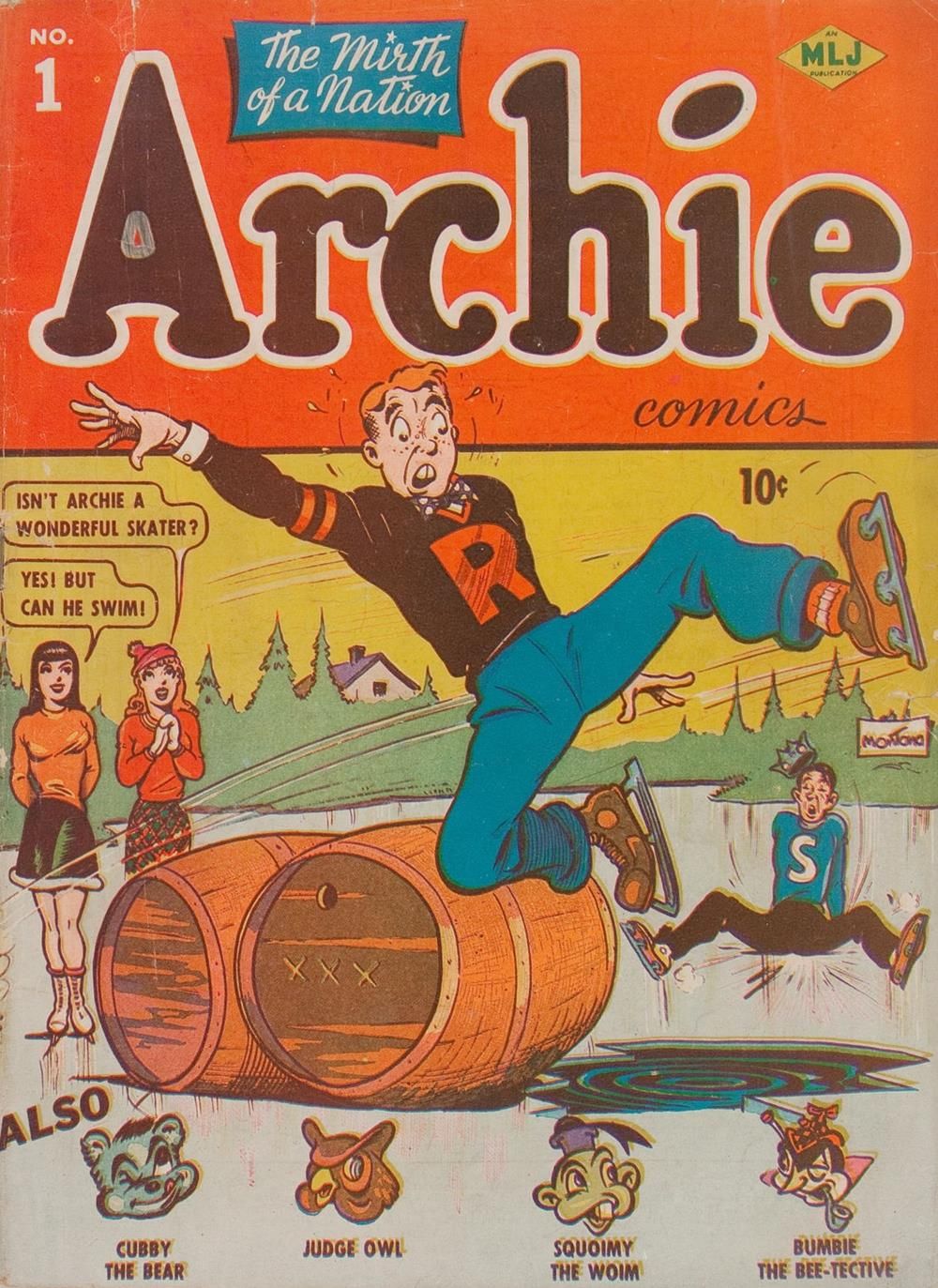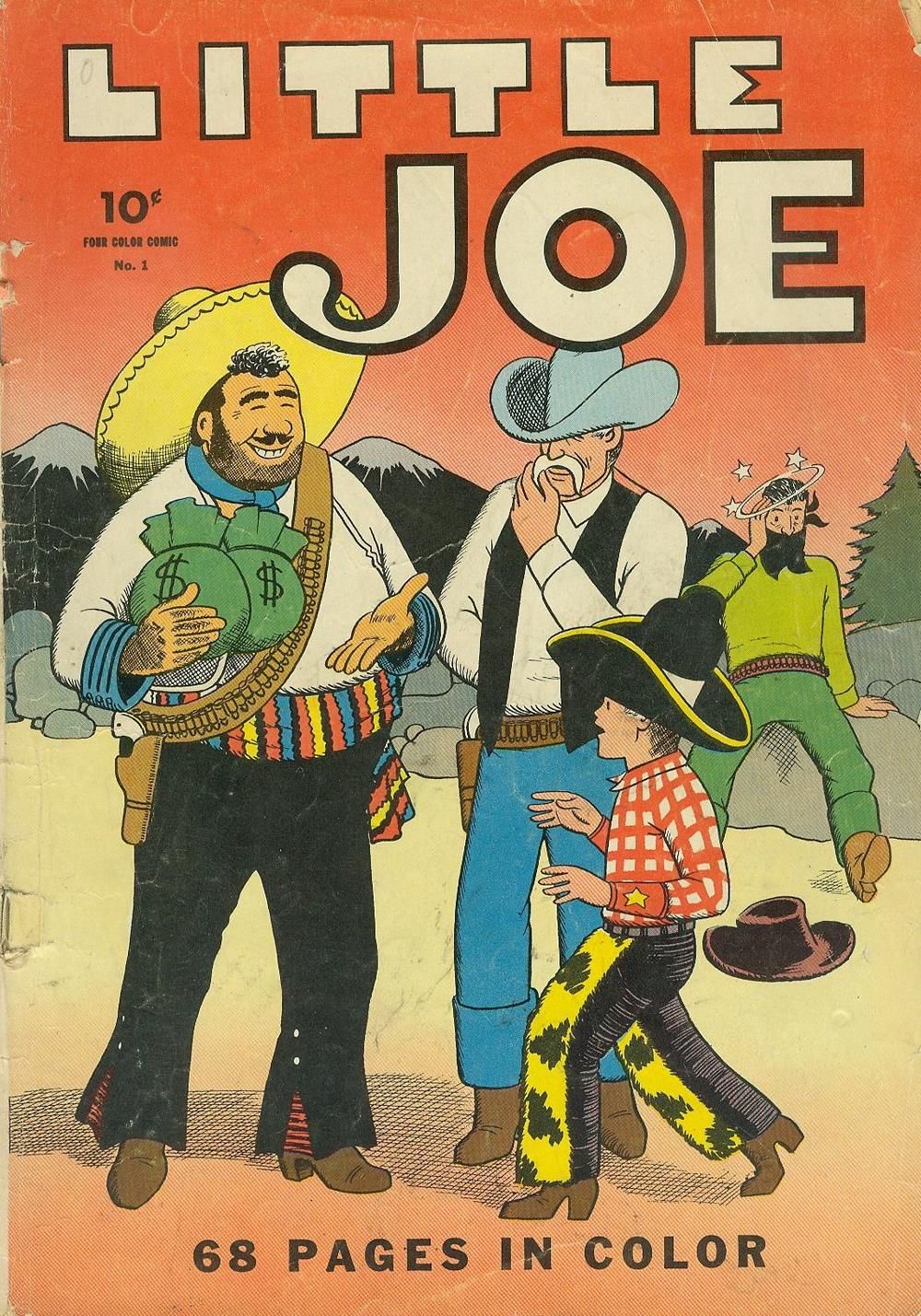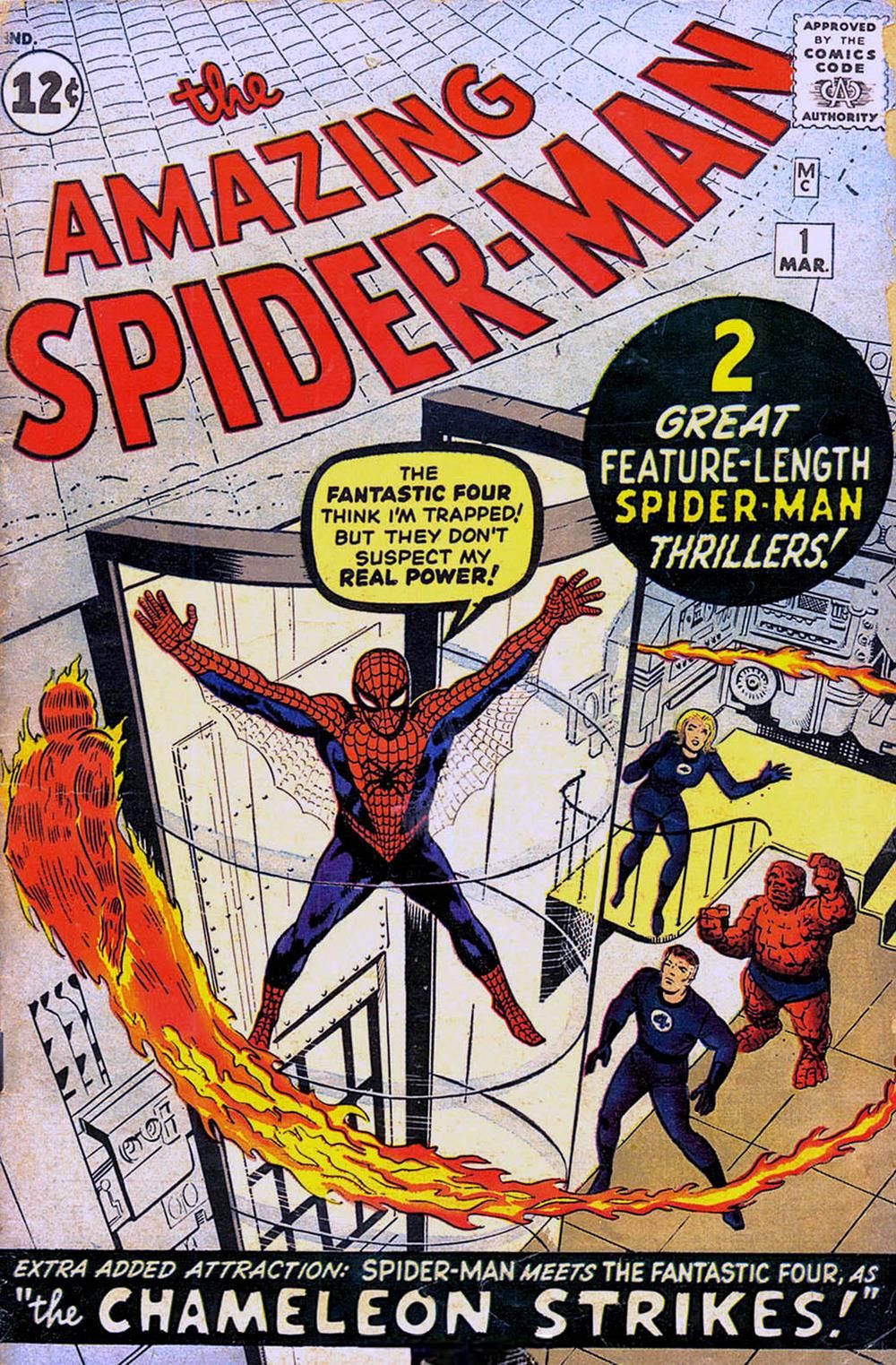Action Comics made history this week as the first major American comic book series to see its 1000th issue released. The idea of a comic book lasting long enough to reach a 1000th issue is certainly something that never would have entered the mind of anyone in the world of comic books when Action was launched. Not a whole of companies were even turning much of a profit with their comic book titles period when National Publications released Action Comics #1 in 1938, let alone having a book sell enough to still be in print over 80 years later.
Still, despite it being the first comic book to hit #1000, Action was not the first successful comic book series, so it had other challengers to the throne. Not only that, but had Action Comics taken longer to re-number (after starting over with a new number following #904, returning to the original numbering with #957), then there are a few other titles that launched soon after Action Comics that would have had a chance at hitting the magic number. Plus, there are a couple of wild cards thrown into the mix that we'll address. So, what other comic books could have hit #1000 before Action Comics? We'll only count comics that were primarily released on a monthly basis that at least reached #100 on their own (as you can't point to a book that only reached #20 and say, "It could have reached #1000!").
RELATED: DC Celebrates Every Iteration of Superman’s Iconic S-Shield
FAMOUS FUNNIES
The first major successful ongoing comic book series was the invention of Eastern Color, a color printing service that handled the color printings for the Sunday edition for the newspapers that they serviced. They realized that there was a high demand for color comics, so one of their salesmen, Max Gaines, came up with the idea of pitching companies on the idea of creating color pamphlets that they could use to promote their products. The most famous example was Gulf Oil Weekly. Four pages of comics, with one comic on each page. This would be given away to help promote Gulf Oil gas stations. It became a sensation and it ran for the next seven years or so.
This made Eastern Color think that an ongoing comic book that they actually charged people for might succeed and so they launched Famous Funnies in 1934, an ongoing comic book series that was mostly made up of reprints of newspaper comic strips (occasionally new stories ran, but they were mostly filler). It lost money at first, but within a year, it was turning a profit and it was the sign to others that ongoing comic books could succeed. Famous Funnies ended in 1955, having published 217 issues.
NEW FUN COMICS
After seeing the success that Famous Funnies was having, pulp magazine writer Major Malcolm Wheeler-Nicholson (who had just recently started doing his own comic strip, which adapted Robert Louis Stevenson's Treasure Island into comic strip form) decided to get into the comic book game, as well. He launched New Fun Comics #1 in 1935, as part of his new comic book company called National Allied Publications. New Fun soon changed its name to More Fun Comics.
It was mostly an adventure comic book series and when Superman turned superheroes into the thing that every comic book company needed, then More Fun Comics launched a number of new superheroes including one, the supernatural Spectre, created by Jerry Siegel himself! In one issue in 1941, they actually introduced both Aquaman and Green Arrow in the same issue! In the late 1940s, National Allied decided to switch content with another comic book series and turned More Fun Comics into a humor magazine. It folded after 127 issues.
NEW COMICS
Wheeler-Nicholson's second title (launched in late 1935) was New Comics (apparently comic book publishing was like advertising, in that the word "new" is the most popular word of them all). Originally designed to be a humor title like New Fun Comics, New Comics soon switched to adventure features. With the twelfth issue, it changed its name to New Adventure Comics and by 1938, it was just simply Adventure Comics.
Like every other comic book series around, as soon as Superman became a success, Adventure Comics became a superhero title, with characters like Sandman and Hourman debuting in its pages. Eventually, it took over the superhero content from More Fun Comics (namely Superboy, Green Arrow and Aquaman) and Adventure Comics was one of the only non-Batman or Superman title to make it from the Golden Age into the Silver Age unscathed. However, anthology series have long been a difficult sell long term, so it had some hard times in the 1970s when it changed formats a couple of times. It folded after 490 issues in 1982, but then was briefly revived as a digest series (mostly reprints). Its irregular release schedule had already seen two other National Allied (later DC Comics) comics pass it in numbering.
DETECTIVE COMICS
In 1936, Wheeler-Nicholson tried to launch a third comic book title, but his company was in trouble. His distributor worked out a deal. They thought that his company had promise, so they cut themselves in as partners in National Allied and also created a new company, Detective Comics, just to publish this new title, Detective Comics. Wheeler-Nicholson, however, ended up getting pushed out of both companies right before the first issue of Action Comics was released.
Of all of the comics on this list, Detective Comics is the only real challenger to Action. Since it came out nearly two years before Action Comics, then logically it should be ahead of Action in numbering. However, Action Comics was a monthly series for much longer than Detective (which had a few notable bi-monthly spells), so by the late 1980s, Action Comics had moved ahead by roughly a year's worth of comics. Then Action went weekly for a little less than a year. and left Detective Comics in its dust. Detective will be hitting #1000 some time next year.
Page 2: [valnet-url-page page=2 paginated=0 text='The%20Latecomers!']
PEP COMICS
One of the many comic book companies that started up because of the success of Superman in Action Comics was MLJ Comics (named after the first initial of its three founders, Maurice Coyne, Louis Silberkleit, and John L. Goldwater). They were the first comic book company to debut a patriotic superhero with the Shield, beating Captain America to the punch by a full year with his debut in 1939's Pep Comics #1 (in fact, when Captain America debuted, they threatened to sue Timely Comics unless his shield was changed as it looked too similar to the Shield's costume).
RELATED: DC Celebrates Every Iteration of Superman’s Iconic S-Shield
In Pep Comics #22, inspired by the success of the then-popular Andy Hardy films starring Mickey Rooney, MLJ introduced a back-up story about a teen named Archie Andrews. Archie soon became so popular that he slowly pushed the superhero characters out of the pages of Pep, and with Pep #57, the comic (and the company) became all about Archie. Pep Comics was always a bit of a hard sell since the name had no real meaning other than the fact that it had already been there, so it eventually folded in 1987, after 411 issues had been released.
WALT DISNEY'S COMICS AND STORIES
Mickey Mouse comic strips had appeared in reprint magazines since the 1933, but it was not until 1940's Walt Disney's Comics and Stories that Disney launched a concerted comic book series. Originally, it just reprinted Mickey Mouse, Donald Duck and other Disney comic strips, but eventually it began doing new stories. The most popular of these stories was the Donald Duck feature that Carl Barks would draw from the early 1940s through the mid-1960s.
Walt Disney's Comics and Stories has gone through many different publishers over the years and as a result, its numbering temporarily stopped, repeatedly. It is currently being published by IDW Publishing and is up to issue #743.
ARCHIE COMICS
Due to the aforementioned success of his feature in Pep Comics (which started in the fall of 1941), Archie Andrews was given his own series in the fall of 1942. The series soon became popular enough that the entire company changed its name from MLJ Comics to Archie Comics. Archie's main series lasted for 666 issues, before ending in 2015, upon which Archie Comics launched a new series in a brand-new continuity.
Page 3: [valnet-url-page page=3 paginated=0 text='The%20Wild%20Cards!']
RELATED: DC Celebrates Every Iteration of Superman’s Iconic S-Shield
FOUR COLOR COMICS
Here's the trick about Action Comics hitting #1000. There already had been a major monthly comic book series hit #1000....over fifty years ago! So what's the deal? You see, Four Color Comics by Dell was one of the more curious comic book series, since what it was was a collection of regular comic book series. Essentially, rather than launching new titles, Dell would just release them as Four Color Comics, let's say, #45. So while the series in it would be regular, there would be a bunch of them at once every month. So it was, by default, not only a weekly comic book series, but sometimes it would release even more than four comics in a given month.
So it really doesn't count, despite the fact that it technically hit #1000 in late 1959 (with a comic based on a TV series of the time, The Grey Ghost). It ended with issue #1,354 in 1968.
AMAZING SPIDER-MAN
Next month, Amazing Spider-Man #800 will come out from Marvel, so clearly, had Action Comics and Detective Comics not re-numbered, then Amazing Spider-Man would have been the next comic book series to hit #1000. However, the trick there is that Amazing Spider-Man had already been on an 18-issue per year schedule for a number of years during the late 1980s and early 1990s, and then again in the early 2000s.
However, the big kick was in 2007's Amazing Spider-Man #546, when the series went to a thrice-monthly release schedule. Coming out almost weekly quickly saw the series burn through #600, and even when it went down to just twice-monthly with issue #648, the advanced release schedule saw it burn up the numbering charts to where it is now Marvel's highest-numbered series, despite initially being behind Fantastic Four, Thor (previously Journey Into Mystery), Incredible Hulk (previously Tales to Astonish) and Captain America (previously Tales of Suspense).

